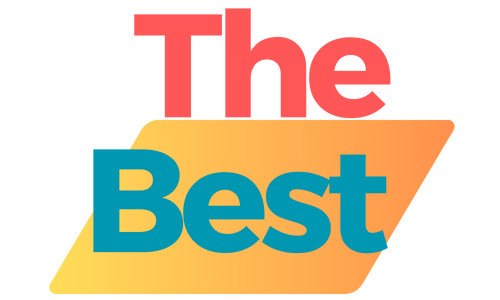Depending on the purpose of the travel, Australians may only need an ESTA
(Electronic System for Travel Authorization). This gives them access for short stays.
| Do I Need an ESTA?
If all of these apply to you, then yes, you'll definitely need an ESTA. |
Australia is a participating country in the Visa Waiver Program (VWP). This program allows Australians to travel to the U.S. for tourism or business purposes for a stay of fewer than 90 days without obtaining a visa. Instead of applying for a visa, travelers must have a valid ESTA.
Key Features of the VWP and ESTA:
- Eligibility: For short-term stays (up to 90 days) for tourism, business, or transit.
- Application: Apply online for ESTA authorisation before travel.
- Validity: ESTA is valid for two years or until the passport expires, whichever comes first.
- Cost: Around $33, including processing fees.
How to Apply for an ESTA
- Complete the Online Application: Provide your personal details, travel information, and answer security questions.
- Pay the Fee: Submit the application fee online.
- Receive Authorisation: Usually within 72 hours. Print a copy for your records.
While ESTA allows for multiple entries, certain travel purposes, such as study for credit, employment, or permanent residence, are not permitted under the VWP.
Business and Tourist Visas (B-1/B-2)
Key Features of the B-1/B-2 Visa:
- Duration: Typically issued for up to 10 years, allowing multiple entries. Each stay can last up to six months.
- Activities Allowed: Tourism, visiting friends and family, attending business meetings, and receiving medical treatment.
- Consult with business associates
- Attend a scientific, educational, professional, or business convention or conference
- Settle an estate
- Negotiate a contract
- Tourism
- Vacation (holiday)
- Visit with friends or relatives
- Medical treatment
- Participation in social events hosted by fraternal, social, or service organisations
- Participation by amateurs in musical, sports, or similar events or contests, if not being paid for participating
- Enrollment in a short recreational course of study, not for credit toward a degree (e.g., a two-day cooking class while on vacation)
- A U.S. citizen who has a permanent home or is stationed in a foreign country, but is visiting or is assigned to the United States temporarily; or
- A foreign citizen who is in the United States on one of the following nonimmigrant visa categories: B, E, F, H, I, J, L, M, O, P, Q, or TN.
Student Visas (F and M)
- Eligibility: For students enrolling in a full-time program at a U.S. educational institution.
- Duration: Valid for the duration of your study program plus an additional 60 days.
- Work Options: Limited on-campus employment is allowed; off-campus employment requires special authorisation.
M-1 Visa (Vocational Studies):
- Eligibility: For students enrolling in vocational or non-academic programs.
- Duration: Typically valid for the duration of the course plus 30 days.
- Work Options: Restricted; on-campus employment is allowed under specific conditions.
- Purpose: The F visa is intended for international students pursuing academic studies at accredited institutions in the United States.
- Eligible Institutions: Includes universities, colleges, high schools, private elementary schools, seminaries, conservatories, and other academic institutions, including language training programs.
- Duration: The visa is typically issued for the duration of the academic program. Students are allowed to remain in the U.S. for up to 60 days after completing their program.
- Work Authorisation:
- On-campus employment is permitted up to 20 hours per week during the school year and full-time during breaks.
- Optional Practical Training (OPT) allows students to work off-campus in their field of study for up to 12 months (with a possible extension for STEM graduates).
- Dependents: F-2 visas are available for dependents (spouse and children) of F-1 visa holders. Dependents cannot work but may study part-time.
- Purpose: The M visa is designed for students attending vocational or non-academic programs in the United States.
- Eligible Institutions: Includes community colleges, technical schools, and vocational training programs.
- Duration: The visa is issued for the length of the vocational program, plus a 30-day grace period to prepare to leave the U.S. The maximum total stay, including extensions, is typically one year.
- Work Authorisation:
- M visa holders are generally not allowed to work while studying. However, they can apply for practical training related to their course of study after completing their program.
- The practical training period is limited to one month for every four months of study, with a maximum of six months.
- Dependents: M-2 visas are available for dependents (spouse and children) of M-1 visa holders. Dependents cannot work but may study part-time.
Exchange Visitor Visas (J)
- Duration: Varies depending on the program, it can range from a few weeks to several years.
- Activities Allowed: Educational and cultural exchange activities, including training, research, and teaching.
- Special Conditions: Some J visa holders are subject to a two-year home-country physical presence requirement.
Work Visas (H-1B, L-1, O-1)
- Eligibility: Requires specialised knowledge and at least a bachelor’s degree.
- Duration: Initially granted for up to three years, with extensions available up to six years.
- Eligibility: For employees of international companies transferring to a U.S. office.
- Duration: L-1A (executives/managers) up to seven years, L-1B (specialised knowledge) up to five years.
- Eligibility: For individuals with extraordinary ability or achievement in fields like arts, sciences, education, business, or athletics.
- Duration: Initially granted for up to three years, with extensions available.
- Software Engineer
- Financial Analyst
- Architect
- Medical Doctor
- Data Scientist
- Mechanical Engineer
- Marketing Manager
IT Project Manager: Managing IT projects and coordinating between the U.S. and international offices.
Human Resources Director: Leading HR functions for the company’s U.S. branch.
Product Manager: Overseeing the development and launch of products in the U.S. market.
Business Development Executive: Identifying and pursuing business opportunities in the U.S.
Supply Chain Manager: Managing the supply chain operations between the U.S. and other countries.
Professional Athlete: Competing at an elite level in sports such as basketball, tennis, or soccer.
Actor/Actress: Performing in film, television, or theater productions.
Renowned Artist: Creating and exhibiting art in prestigious galleries and museums.
Famous Chef: Leading a top restaurant or culinary institution.
Author: Writing best-selling books or significant literary works.
Music Composer: Creating original music compositions for concerts, films, or other media.
- Conduct job interviews from Australia using Zoom or video conferencing tools.
- Secure a job offer from a U.S. employer who can sponsor your work visa.
- Apply for the appropriate work visa through the U.S. Embassy or Consulate in Australia.
- Only travel to the U.S. after your work visa has been approved.
- Discuss and negotiate the job terms, but do not start working while on an ESTA.
- Return to Australia to apply for the appropriate work visa.
- Have your employer file a petition for a work visa on your behalf.
- Apply for the work visa at a U.S. Embassy or Consulate in Australia.
- Return to the U.S. to start your job legally after the work visa is approved.
Step-by-Step Instructions for Australians
- Determine Visa Type: Identify the appropriate visa category based on the purpose of your visit.
- Complete Form DS-160: Fill out the online nonimmigrant visa application form (DS-160).
- Pay Visa Fee: Pay the required visa application fee. (See pricing)
- Schedule an Interview: Book an appointment for a visa interview at the nearest U.S. embassy or consulate.
- Prepare Documentation: Gather all necessary documents, including a valid passport, DS-160 confirmation page, visa fee receipt, and supporting documents (e.g., proof of travel purpose, financial status).
- Attend Interview: Attend the visa interview with all required documents. Be prepared to answer questions about your travel plans and background.
- Receive Visa: If approved, your visa will be stamped in your passport. Processing times vary.
US Visa Pricing
- Application Fee: The standard application fee for B-1/B-2 visas is USD $160. This fee is non-refundable and must be paid whether your visa is approved or not.
- Additional Costs: Depending on your circumstances, you may incur additional costs such as travel to the U.S. Embassy or Consulate for your interview, courier fees for document delivery, and any translation or documentation preparation costs.
- Application Fee: The application fee for an H-1B visa varies, with a standard fee of USD $460. There are additional fees for employers, including the ACWIA fee (USD $750 or $1,500 depending on the size of the company) and the Fraud Prevention and Detection fee (USD $500).
- Premium Processing: For faster processing, premium processing is available for an additional fee of USD $2,500.
- Application Fee: The application fee for an L-1 visa is USD $460. Employers may also need to pay a Fraud Prevention and Detection fee of USD $500.
- Premium Processing: Available for an additional fee of USD $2,500, if you need expedited service.
- Application Fee: The application fee for an O-1 visa is USD $460.
- Premium Processing: Expedited processing is available for an additional fee of USD $2,500.
- SEVIS Fee: For certain visa types like F, M, and J visas, a SEVIS (Student and Exchange Visitor Information System) fee is required. This fee is typically USD $350 for F and M visas and USD $220 for J visas.
- Visa Issuance Fee: Some applicants might be required to pay a visa issuance fee, which varies by country and reciprocity agreements.
All pricing and fee information is accurate as of July 13th, 2024. Visa fees and associated costs are subject to change. Always check the latest fee information on the official U.S. Department of State website or consult with the U.S. Embassy or Consulate in Australia.
Top Tips for a Smooth Application
- Early Application: Apply for your visa well in advance of your travel date to allow for processing time.
- Accurate Information: Ensure all information provided in your application is accurate and complete.
- Supporting Documents: Bring additional documents that support the purpose of your visit, such as invitation letters, proof of ties to Australia, and financial statements.
- Interview Preparation: Be honest and concise in your responses during the visa interview. Practice answering common interview questions to increase confidence.
Common Visa Interview Questions
- US Embassy & Consulates in Australia
- US Embassy Canberra
- US Consulate General Sydney
- US Consulate General Melbourne
- US Consulate General Perth
2. Official Visa Information
- US Visa Information and Appointment Services
- Consular Electronic Application Center (CEAC)
- ESTA Application Website
3. Travel Advisory and Updates
Contact Information
- US Embassy Canberra
- Address: Moonah Place, Yarralumla ACT 2600, Australia
- Phone: +61 2 6214 5600
- Address: MLC Centre, Level 10, 19-29 Martin Place, Sydney NSW 2000, Australia
- Phone: +61 2 9373 9200
- Address: 553 St Kilda Road, Melbourne VIC 3004, Australia
- Phone: +61 3 9526 5900
- Address: Level 13, 16 St Georges Terrace, Perth WA 6000, Australia
- Phone: +61 8 6144 5100
The information provided on this website is for general informational purposes only and does not constitute legal advice. While we strive to keep the information up-to-date and accurate, we make no representations or warranties of any kind, express or implied, about the completeness, accuracy, reliability, suitability, or availability with respect to the website or the information, products, services, or related graphics contained on the website for any purpose. Any reliance you place on such information is therefore strictly at your own risk. For specific legal advice regarding visas, please consult with a qualified immigration lawyer or the relevant governmental authorities.
Additionally, some of the links contained in this article are affiliate links, meaning that The Best may receive a commission if you click through and make a purchase. This comes at no additional cost to you and helps support our website.








